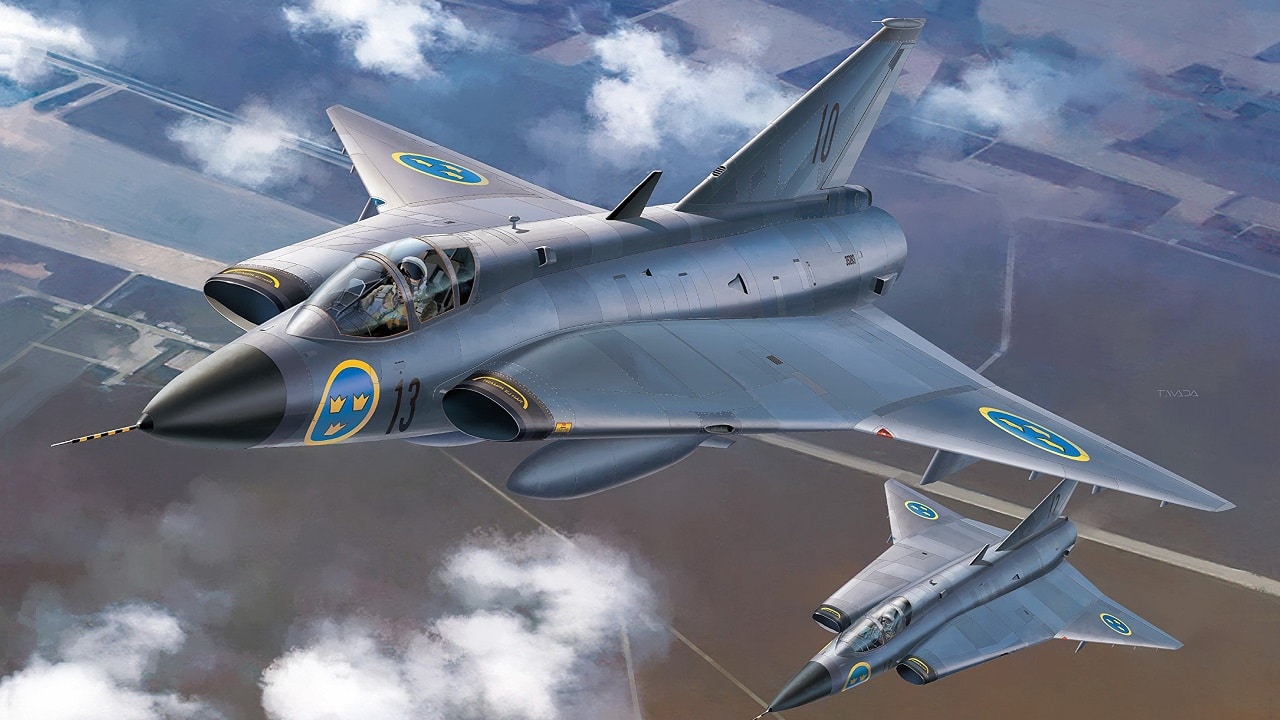Saab 35 Draken – Sweden Had a Cold War Fighter to Be Reckoned With – As Sweden now ponders joining NATO after the Russian invasion of Ukraine, it is illustrative to examine a Swedish Cold War airplane that was meant to stand up to the Soviets. Sweden was neutral during that era, but its military feared a spill-over effect if the Soviets violated Swedish air space in a menacing manner. Thus, the Saab 35 Draken fighter emerged with an interesting and innovative design.
This Airplane Started Off with a Unique Design
In the late 1940s, Sweden wanted a fighter-interceptor that was fast and could climb quickly against enemy bombers. The requirements called for a large weapons storage, long endurance, and the ability to take off from short runways. Swedish engineers and technicians had a brainwave on a new design feature. They arrived on a unique double delta wing design that made the Draken stand out among other fighters of its day. This was a leap forward in what was possible in fighter jets at the time.
Double Delta Wing Was Like No Other
Military Factory described the wing design as a “two paired delta wings” working in tandem. One pair set forward with a “sharper sweep angle” and the second pair with a more “gradual angle.” This was mated with a single vertical tail.
It Became a Fast Fighter
By the 1950s this design resembled a kite, and it kept that nickname, even though the translation of Draken is “dragon.” The wings provided speed and maneuverability plus the ability to carry more fuel and weapons. The air intakes with elliptical openings allowed one prototype in the mid-1950s to break the sound barrier on a climb, which showed that the design of the Draken was advantageous.
Superstalls Were Dangerous
However, sometimes the airplane “superstalled”, (a sudden loss of altitude due to instability) and the test pilots were forced to create maneuvers that would avoid these dangers. This learning curve came at a cost. There were 179-Draken superstalls that resulted in 35-crashes that ended up killing four pilots. Since the Draken was exported to Finland, Austria, and Denmark, more pilots had to be trained on how to avoid these treacherous losses of altitude.
Saab 35: Pilots Had to React Quickly
To finally answer the question of superstalls, pilots learned the “Cobra Maneuver,” which National Interest described as “a technically challenging aerobatic display in which a rapid lift of the nose causes an airplane to fly forward perpendicular to the ground. While a pilot faces the sky, they momentarily turn the airframe into an enormous airbrake and so rapidly slows down the airplane.”

Image: Creative Commons.

Image: Creative Commons
Saab 35: This Fighter Had Staying Power
651 of the planes were produced over the decades and it emerged as the main fighter-interceptor for the Swedish air force. It was the first European-built airplane to reach MACH Two. The Draken never faced combat but it likely would have performed well against Soviet fighters in a dogfight. It carried an array of weapons including cannons, bombs, and Sidewinder air-to-air missiles.
Despite the danger of superstalls, the Draken had a sterling reputation and Austria even kept them in service until 2005, which meant that they flew 50 years. The original Swedish designers probably had no idea that the radical double delta wings would display that much durability.
Now serving as 1945’s Defense and National Security Editor, Brent M. Eastwood, PhD, is the author of Humans, Machines, and Data: Future Trends in Warfare. He is an Emerging Threats expert and former U.S. Army Infantry officer. You can follow him on Twitter @BMEastwood.

